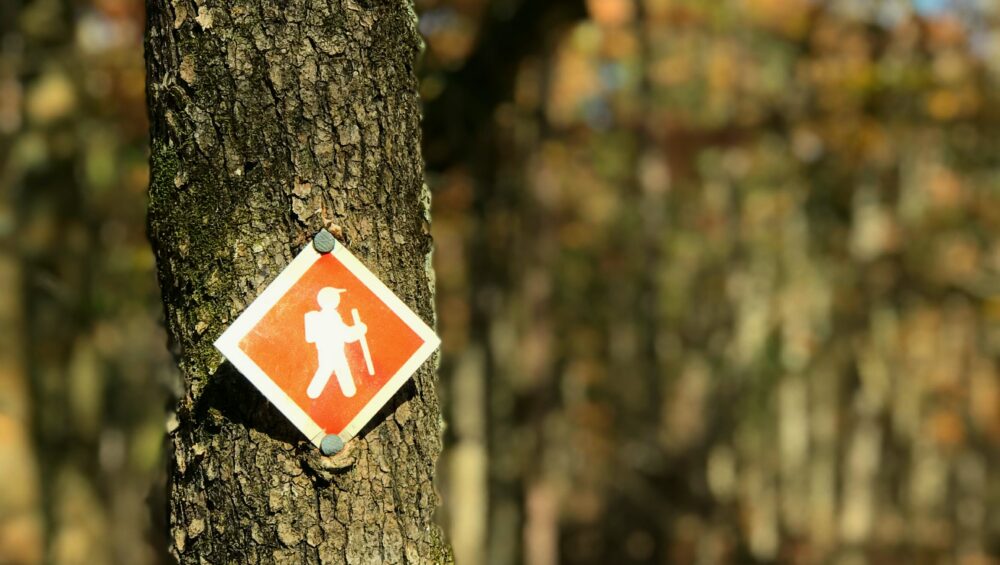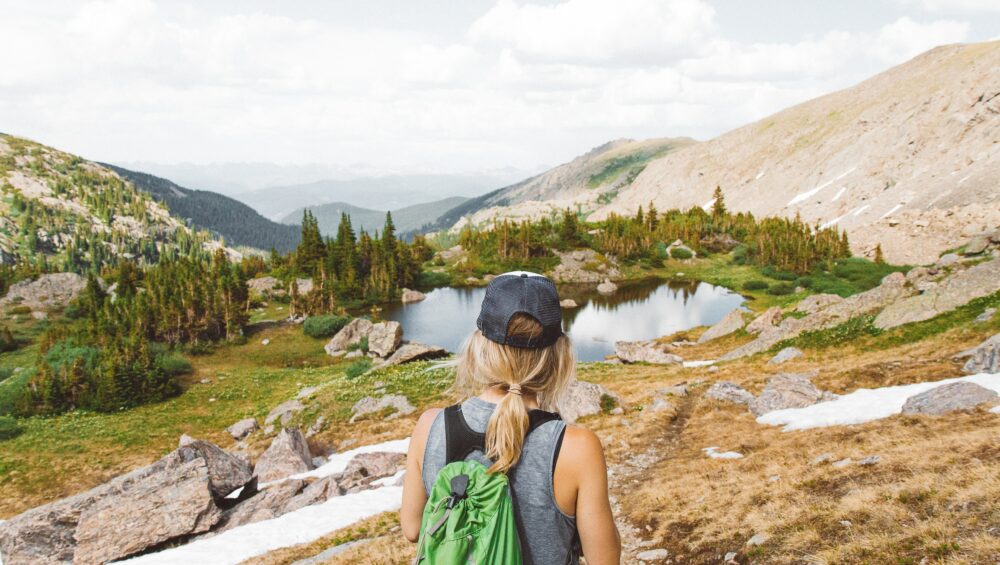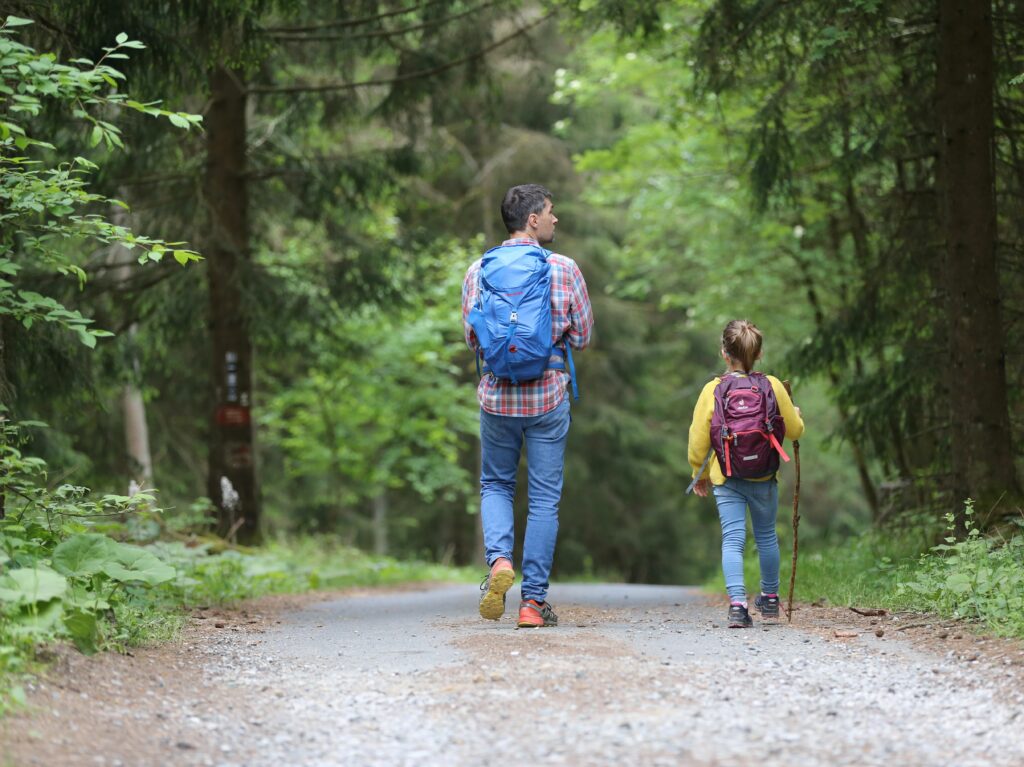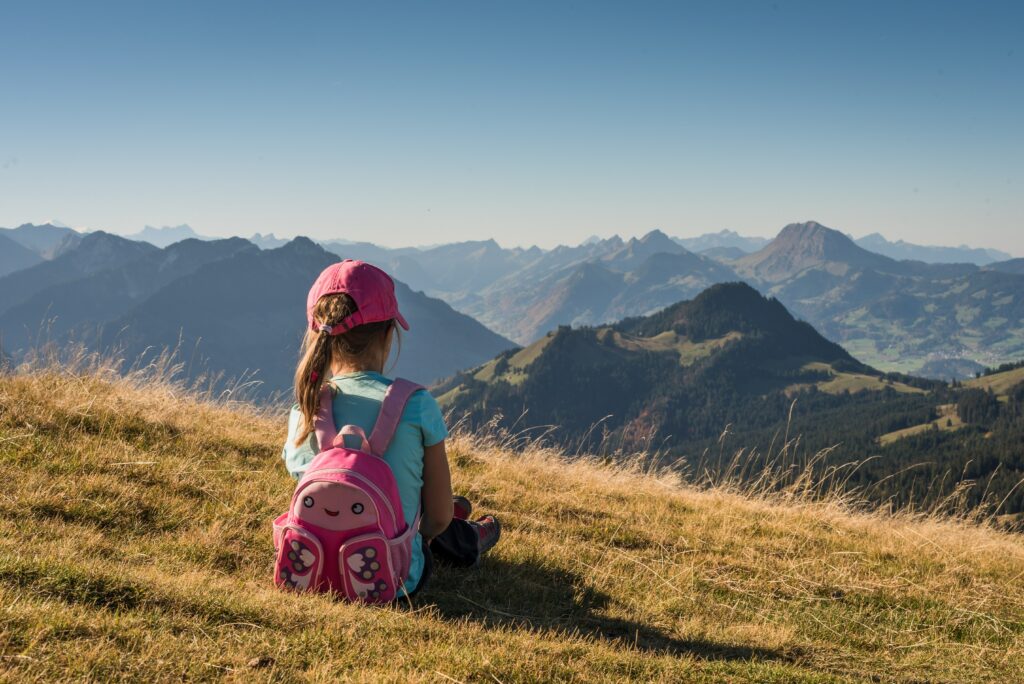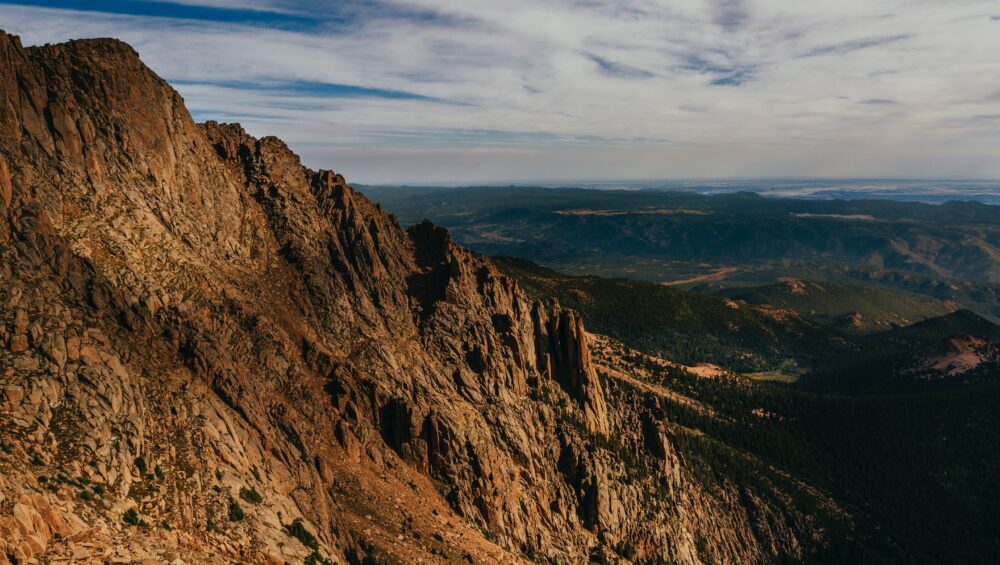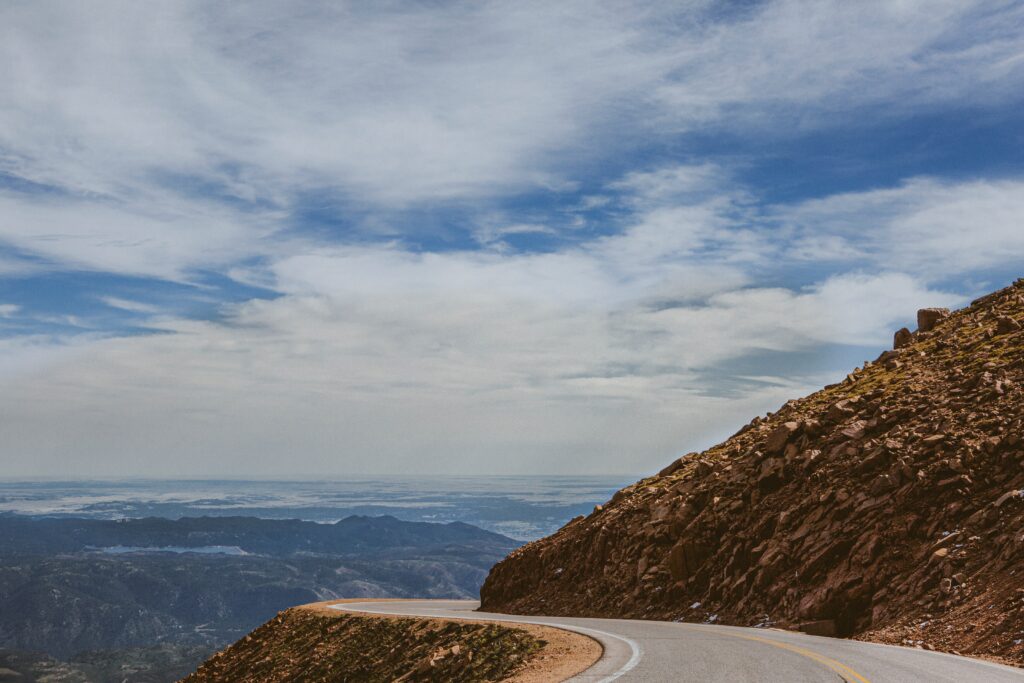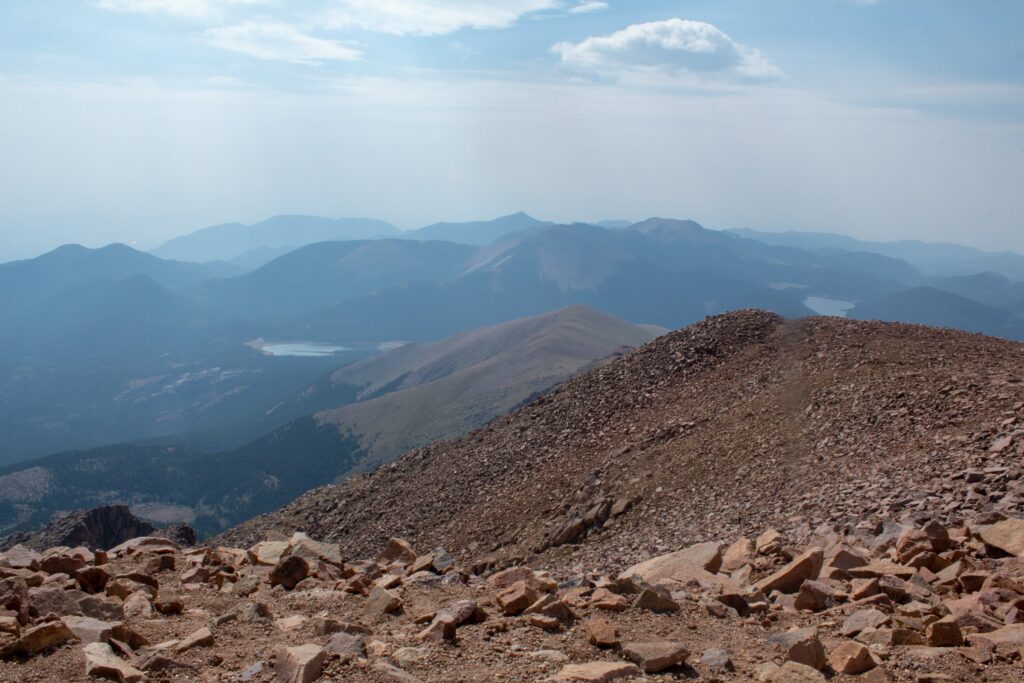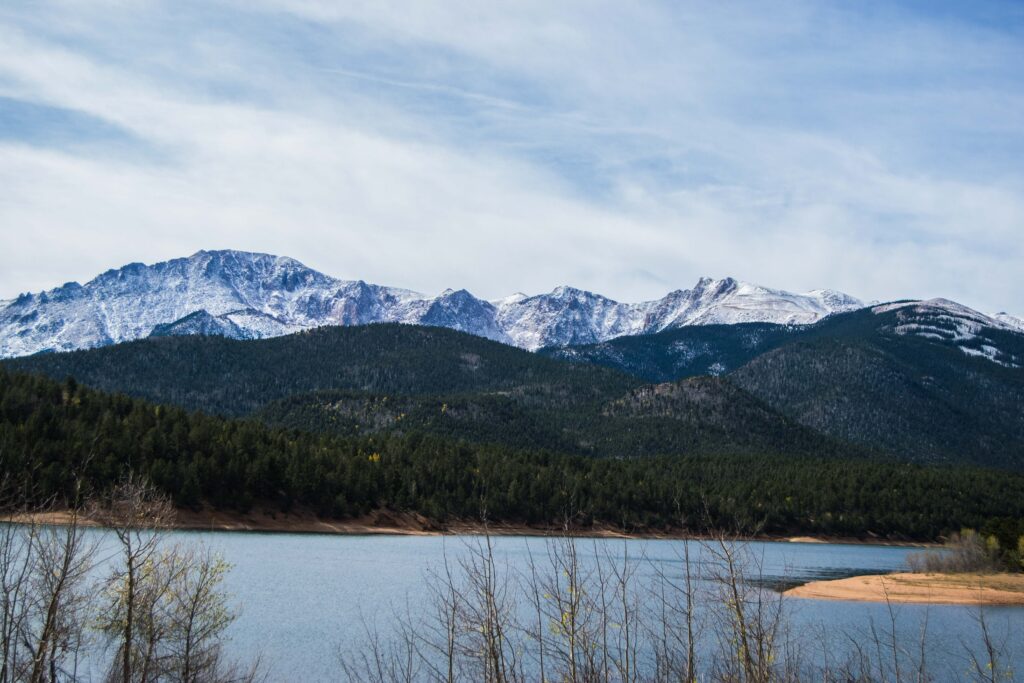The city and area surrounding Colorado Springs have gorgeous scenery and ample ways to enjoy the great outdoors, perhaps one of the best parts of Colorful Colorado. Whether you are looking for a quick walk or a long, tiring trek, there are plenty of hiking trails in Colorado Springs at every difficulty level. And for those just getting started, be sure to check out our guided hiking tours.
If you are looking for the absolute best trails in Colorado Springs, we have an in-depth review of our top 5 favorite hikes near Colorado Springs. You’ll also see them on this list along with many other excellent options for hikers of all abilities. This list is organized roughly by difficulty level, as determined based on reviews from fellow hikers, length, and elevation gain. So if you are wondering where to hike in Colorado Springs, look no further.
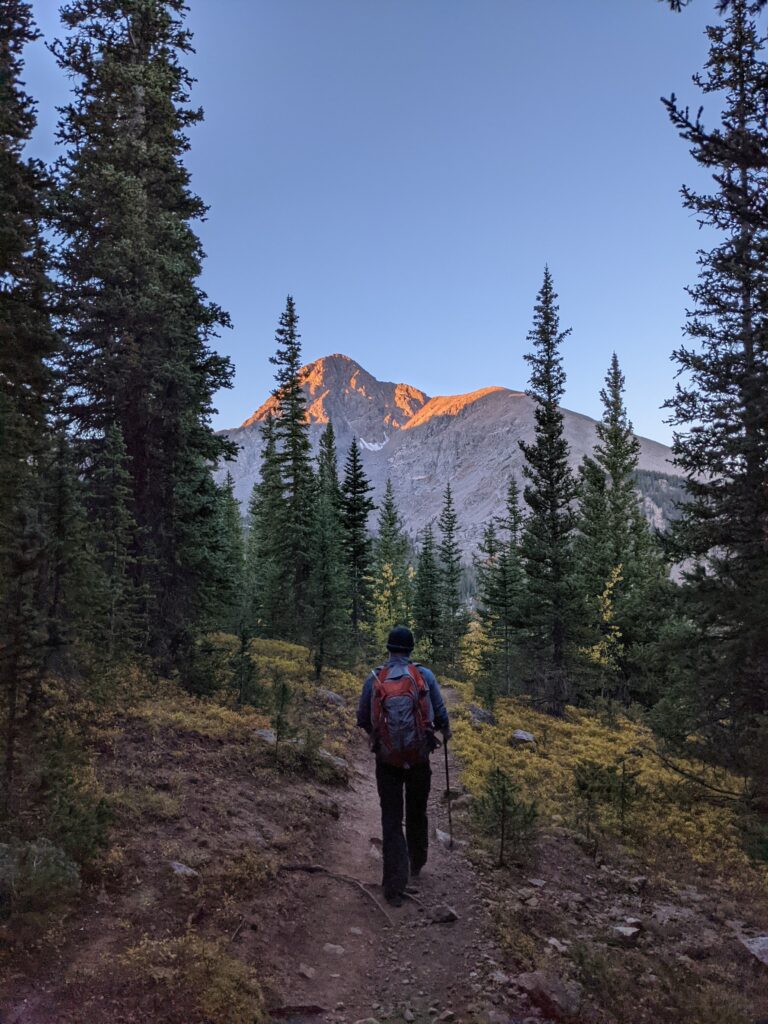
Easy Hikes
Memorial Park – Prospect Lake Loop Trail
Parking: 280 S Union Blvd, Colorado Springs, CO 80910 (Tons of parking available in the park along Memorial Dr)
Elevation Gain: 26 feet
Round Trip Mileage: 1.3 miles
Highlights:
- Paved loop, very accessible for wheelchairs, strollers, etc.
- Great views of mountains and scenic lake
- Beach area and playground
Palmer Park – Cheyenne and Grandview Trail Loop
Parking: Palmer Park Trail Cave Outlook, 3120 N Chelton Rd, Colorado Springs, CO 80909
Elevation Gain: 183 feet
Round Trip Mileage: 1.8 miles
Highlights:
- So much to see here including a botanical reserve, horse stables, canyons, ravines, bluffs, and more
- Tons of wildlife: Palmer Park is popular among birdwatchers
Stratton Open Space – The Chutes, Laveta, and Chamberlain Trail Loop
Parking: North Cheyenne Cañon Park & Stratton Open Space Trailhead, N Cheyenne Canyon Rd, Colorado Springs, CO 80906 (on the right, just past the Starsmore Visitors Center)
Elevation Gain: 705 feet
Round Trip Mileage: 3.8 miles miles
Highlights:
- Most popular hiking trail in Stratton Open Space
- Excellent wildflowers and wildlife
- Beautiful views of the Gold Camp Reservoirs
Garden of the Gods – The Palmer, Buckskin-Charley, Niobrara, and Bretag Trail Loop
Parking: 3105 Gateway Rd, Colorado Springs, CO 80904
Elevation Gain: 449 feet
Round Trip Mileage: 4.0 miles
Highlights:
- Gorgeous views of the National Natural Landmark that is Garden of the Gods
- Combines four popular trails around the park
- Access to horseback riding, rock climbing, and biking trails
- A Top 5 Pick! Learn More.
Ute Valley Park – Ute Valley Park Trail
Parking: Ute Valley Trail Head, Ute Vly Trl, Colorado Springs, CO 80919
Elevation Gain: 488 feet
Round Trip Mileage: 4.3 miles
Highlights:
- Excellent views of Pikes Peak
- Plenty of side trails to explore
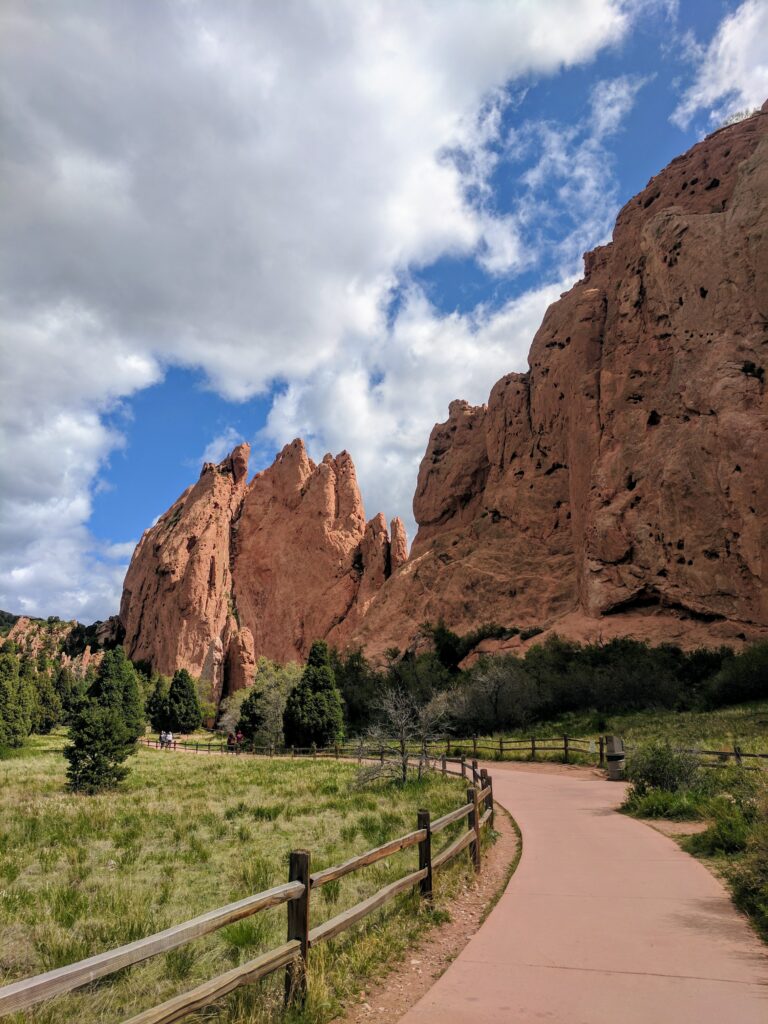
Moderate Hikes
North Cheyenne Cañon Park – Mount Buckhorn Peak
Parking: Upper Gold Camp parking lot, 4415 Gold Camp Rd, Colorado Springs, CO 80906
Elevation Gain: 859 feet
Round Trip Mileage: 3.9 miles
Highlights:
- Beautiful views along the way
- Boulders to climb at the summit (the tallest offers panoramic views)
- A Top 5 Pick! Learn More.
North Cheyenne Cañon Park – Seven Bridges Trail
Parking: Seven Bridges Trailhead, N Cheyenne Canyon Rd, Colorado Springs, CO 80906 (right before Helen Hunt Falls)
Elevation Gain: 912 feet
Round Trip Mileage: 3.5 miles
Highlights:
- Very popular trail due to its history and uniqueness
- Meanders alongside a creek and crosses over via seven charming bridges
- Close to Helen Hunt Falls and Silver Cascade Falls
Pike National Forest – The Crags Trail
Parking: Crags/Devil’s Playground Trailhead, 615 Teller Co Rd 62, Divide, CO 80814
Elevation Gain: 820 feet
Round Trip Mileage: 4.8 miles
Highlights:
- Awesome views of unique geological features
- Well marked trail
- Challenging, but a good introduction for beginner hikers
- A Top 5 Pick! Learn More.
North Cheyenne Cañon Park – Mount Muscoco Trail
Parking: Mount Cutler and Muscoco Trailhead, N Cheyenne Canyon Rd, Colorado Springs, CO 80906 (on the left, 1.5 miles past Starsmore Visitors Center)
Elevation Gain: 1,292 feet
Round Trip Mileage: 4.0 miles
Highlights:
- Includes a fun scramble at the summit
- Outstanding views of the surrounding mountains
- Well marked and well maintained
- A Top 5 Pick! Learn More.
North Slope Recreation Area – North Catamount Reservoir Trail
Parking: Pikes Peak Toll Rd, Woodland Park, CO 80863 (just past the Crystal Reservoir Visitors Center)
Elevation Gain: 262 feet
Round Trip Mileage: 2.7 miles
Highlights:
- Short but steep (15% grade around the 1.5-mile marker), so you’ll get a good workout
- Beautiful views of meadows and wildflowers along the way
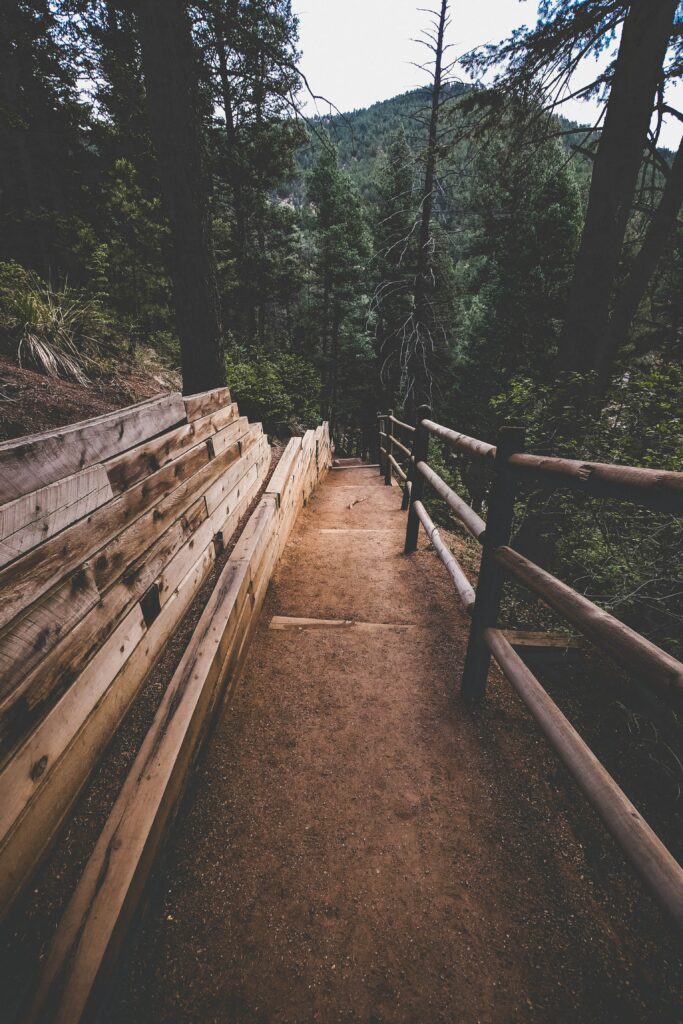
Hard Hikes
Red Rock Canyon Open Space – Sand Canyon, Mesa, Greenlee, Red Rock Canyon Loop
Parking: 3550 W High St, Colorado Springs, CO 80904
Elevation Gain: 882 feet
Round Trip Mileage: 5.4 miles
Highlights:
- Varied terrain and interesting geology
- Lots of sun as shade is limited
- Good views without too difficult an elevation gain
Pike National Forest – The Incline Trail
Parking: Barr Trailhead, 98 Hydro St, Manitou Springs, CO 80829
Elevation Gain: 1,978 feet
Round Trip Mileage: 4.0 miles
Highlights:
- The most popular trail in the Pike National Forest
- All the elevation is in the first mile – at the hardest point, it’s an extremely challenging 61% grade!
North Slope Recreation Area – Limber Pine, Mule Deer, Mackinaw, and Ridge Trails Loop
Parking: Catamount Recreation Area, 3168 Co Rd 28, Woodland Park, CO 80863
Elevation Gain: 1,036 feet
Round Trip Mileage: 8.4 miles
Highlights:
- Challenging trek around the North Catamount Reservoir with a bunch of elevation changes
- At times follows the water, and at other times, you’ll be in the forest
North Cheyenne Cañon Park – Columbine Trail
Parking: Starsmore Discovery Center, 2120 S Cheyenne Canyon Rd, Colorado Springs, CO 80906
Elevation Gain: 1,607 feet
Round Trip Mileage: 7.6 miles
Highlights:
- Great views of the surrounding mountains
- Plenty of wildlife (don’t forget to check out the Starsmore Discovery Center at the trailhead
- Gradually inclining slope, no huge scrambles
- A Top 5 Pick! Learn More.
Pike National Forest – The DeCaLiBron: Mounts Democrat, Cameron, Lincoln and Bross Trail
Parking: Kite Lake Trailhead, Co Rd 8, Alma, CO 80420
Elevation Gain: 3,136 feet
Round Trip Mileage: 7.0 miles
Highlights:
- Ability to summit three 14-ers, the highest being Mount Lincoln at 14,295’ (Note that Mount Bross is private property and illegal to summit)
- Real right of passage for serious Colorado hikers
Final Thoughts
Before you hit one of these awesome hiking trails in Colorado Springs, be sure that you are well prepared for your trip. Bring plenty of water, sunscreen, and other essentials that we cover in how to pack for a day hike. Happy trails!

